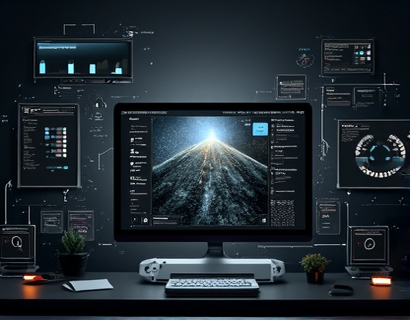Real-Time Government Data: Empowering Citizens Through Open Access and Enhanced Civic Participation
In the digital age, the accessibility of real-time government data has emerged as a pivotal factor in transforming the way citizens engage with their governance structures. This shift towards open data initiatives is not merely a technological advancement but a fundamental step towards fostering a more transparent, accountable, and participatory democracy. By providing citizens with immediate access to government operations and decisions, real-time data empowers individuals to make informed choices, hold authorities accountable, and actively participate in the democratic process.
The Importance of Real-Time Data in Governance
The concept of real-time government data refers to the immediate and continuous availability of information generated by governmental bodies. This includes data on public spending, policy implementations, environmental metrics, public health statistics, and more. The significance of such data lies in its ability to bridge the gap between the government and its citizens, ensuring that the latter are well-informed about the actions and decisions that affect their lives.
Real-time data is crucial for several reasons. Firstly, it enhances transparency by making government operations visible to the public. When citizens can access up-to-date information on how public funds are being utilized or how policies are being executed, it becomes easier to scrutinize and evaluate the performance of public officials. This transparency is a cornerstone of democratic governance, as it reduces the potential for corruption and mismanagement.
Enhancing Civic Engagement Through Open Data
The availability of real-time government data significantly boosts civic engagement. When citizens have access to timely and accurate information, they are better equipped to participate in the democratic process. This engagement can take various forms, from informed voting to active participation in public consultations and community projects. The empowerment that comes from having access to real-time data encourages citizens to take a more proactive role in shaping their communities and holding their leaders accountable.
Moreover, real-time data facilitates the creation of citizen-driven initiatives and innovations. With access to government data, developers and researchers can create applications and tools that address specific community needs. For instance, data on traffic patterns can be used to develop apps that provide real-time traffic updates, helping citizens plan their commutes more efficiently. Similarly, environmental data can be leveraged to create platforms that monitor air quality and promote sustainable practices.
Case Studies of Successful Real-Time Data Initiatives
Several cities and countries have successfully implemented real-time data initiatives, demonstrating the positive impact on civic engagement and governance. One notable example is the city of Barcelona, which has embraced the Open Data Catalogue. This platform provides access to a wide range of city data, including transportation, environment, and public services. The initiative has led to the development of numerous apps and services that improve the quality of life for residents, such as a bike-sharing system and a platform for reporting street issues.
Another example is the United States, where the Data.gov platform serves as a central repository for federal government data. This initiative has been instrumental in promoting transparency and innovation. Developers and researchers have used the data to create tools that track government spending, monitor environmental changes, and enhance public health services. The success of Data.gov has inspired similar initiatives at the state and local levels, further expanding the reach of open data.
The Role of Technology in Facilitating Real-Time Data Access
The advancement of technology has been a key driver in making real-time government data accessible to the public. The proliferation of the internet, mobile devices, and data analytics tools has transformed the way information is disseminated and consumed. Government agencies can now publish data in various formats, such as JSON, XML, and CSV, making it easier for developers to integrate and analyze the data.
Furthermore, the use of APIs (Application Programming Interfaces) has revolutionized data access. APIs allow developers to retrieve and utilize government data seamlessly, enabling the creation of sophisticated applications and services. For instance, a city can provide an API for public transportation data, allowing developers to build apps that help citizens navigate the transit system more effectively. This not only enhances user experience but also promotes the efficient use of public resources.
Challenges and Considerations in Implementing Real-Time Data Initiatives
While the benefits of real-time government data are clear, there are several challenges that need to be addressed to ensure the successful implementation of such initiatives. One of the primary concerns is data quality and accuracy. Government data must be reliable and up-to-date to be useful. This requires robust data management systems and regular audits to ensure the integrity of the information provided.
Another challenge is ensuring data privacy and security. Sensitive information must be protected to prevent misuse or unauthorized access. Government agencies must implement stringent security measures and comply with data protection regulations to maintain public trust. Transparency in data collection and usage policies is essential to address privacy concerns and foster citizen confidence.
Building a Culture of Open Data
To fully realize the potential of real-time government data, a cultural shift towards openness and transparency is necessary. This involves not only providing access to data but also fostering a mindset that values collaboration and citizen participation. Government agencies should actively engage with the public to understand their needs and gather feedback on how data can be best utilized.
Educational initiatives play a crucial role in building this culture. By educating citizens about the importance of open data and how to use it, governments can empower individuals to become active participants in the democratic process. Workshops, online tutorials, and community events can help demystify data and encourage its practical application.
The Future of Real-Time Government Data
As technology continues to evolve, the potential for real-time government data to transform civic engagement is immense. The integration of emerging technologies such as artificial intelligence and the Internet of Things (IoT) can further enhance the utility and accessibility of government data. AI can help in analyzing large datasets to provide insights and predictions, while IoT devices can generate real-time data on various aspects of urban life, from traffic to energy consumption.
Looking ahead, the goal should be to create a seamless ecosystem where government data is not only accessible but also actionable. This involves developing user-friendly platforms that present data in intuitive and meaningful ways, enabling citizens to make informed decisions and contribute to policy-making processes. The ultimate aim is to build a governance model that is transparent, responsive, and deeply rooted in the needs and preferences of its citizens.
In conclusion, real-time government data is a powerful tool for enhancing civic participation and fostering a collaborative democratic process. By embracing open data initiatives, governments can increase transparency, accountability, and engagement. As citizens become more informed and empowered, the democratic system itself becomes stronger and more resilient. The journey towards a more open and participatory government is ongoing, and the steps taken today will shape the future of civic engagement for generations to come.










































